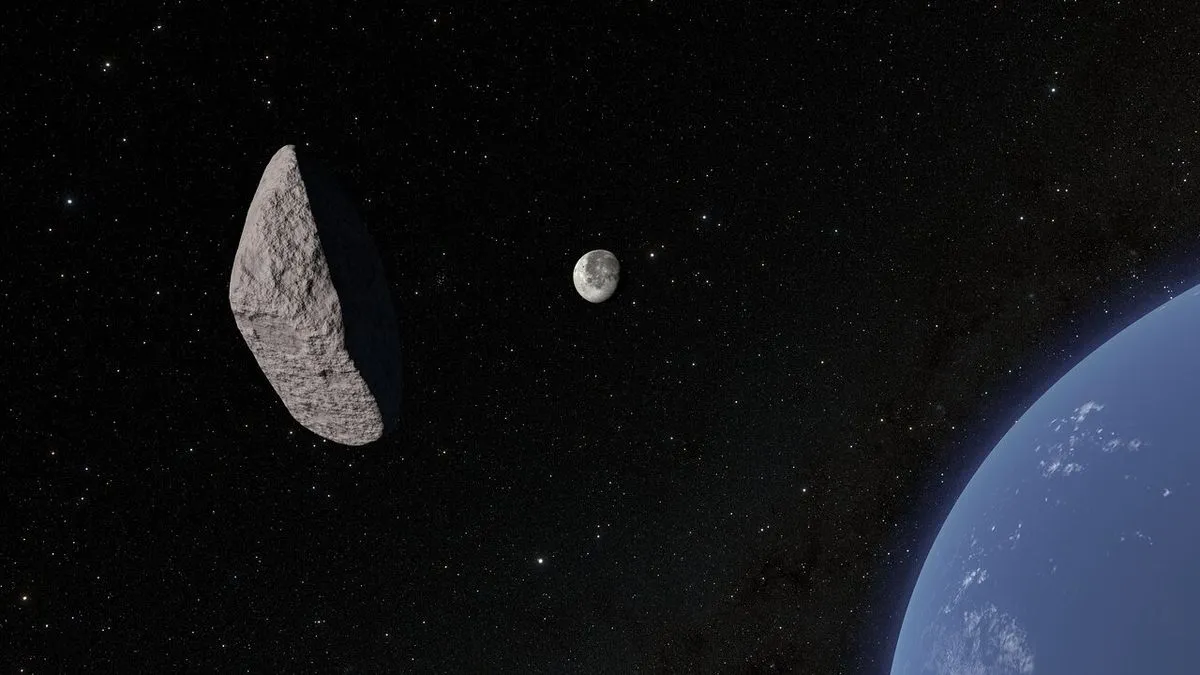
The asteroid 2024 YR4 has garnered significant attention this year due to its potential collision course with Earth. A new study sheds light on this intriguing space rock, revealing that it likely originates from the central region of the main asteroid belt situated between Mars and Jupiter. This area is not typically associated with asteroids that cross paths with our planet, making this discovery particularly noteworthy.
Shortly after its discovery in late 2022, astronomers assessed that 2024 YR4 had a concerning 1.3% chance (or 1-in-83) of impacting Earth in December 2032. This alarming probability briefly placed the asteroid at the forefront of impact risk lists maintained by NASA and the European Space Agency, igniting discussions around planetary defense and prompting extensive follow-up observations to refine its trajectory.
Experts were optimistic, suggesting that the risk would decrease with improved observations. By late February, the estimated threat to Earth had diminished to nearly zero, and by early April, images captured by the James Webb Space Telescope confirmed that the building-sized rock would safely pass by Earth in 2032. Notably, while the asteroid measures approximately 60 meters in diameter—about the width of a football field—it still carries a 2% chance of striking the moon.
Recent observations from the Gemini South telescope in Chile and the Keck Observatory in Hawaii have provided compelling evidence supporting the notion that 2024 YR4 originated from the central main asteroid belt. A key clue to its origin lies in the asteroid's retrograde spin, which indicates that it rotates on its axis in the opposite direction to its orbit around the sun.
The Yarkovsky effect, a subtle force resulting from uneven sunlight absorption and re-emission, likely contributes to the asteroid's drift inward over time, potentially leading to a near-Earth orbit. As reported by researcher Bolin, the findings were surprising, as the central main asteroid belt was not previously considered a significant source of Earth-crossing asteroids.
The study indicates that gravitational interactions with Jupiter may have played a crucial role in nudging 2024 YR4 into its current Earth-crossing orbit. Additionally, the asteroid has a remarkably rapid rotation period of just 20 minutes. The analysis of its light curve, which tracks variations in brightness over time, allowed Bolin and his team to accurately determine the asteroid's composition and orbital characteristics. They also discovered its distinctly flattened, hockey-puck-like shape, a rarity among asteroids typically characterized by more potato-like or top-like forms.
Asteroids larger than about 328 feet (100 meters) are often classified as rubble piles—collections of fragments loosely bound together following the breakup of a larger parent asteroid. Given that 2024 YR4 falls within the boulder size range, scientists speculate that it may have once been a boulder on a larger rubble-pile asteroid.
The data from this study will be instrumental in assessing the physical properties and shapes of potentially impacting asteroids. It serves as a valuable test case for the kind of rapid response observations necessary to characterize potential threats like 2024 YR4. Bolin's research highlights the importance of ongoing monitoring and analysis to better understand and mitigate risks associated with near-Earth objects.